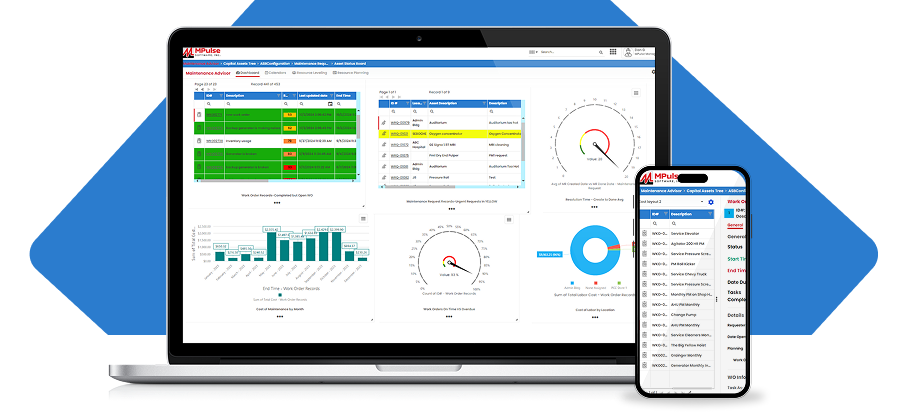When something breaks in a building, maintenance techs need to figure out what needs fixing, where to find it, and when to repair it. Today, many businesses, schools, hospitals, and property managers use maintenance work order software to make this process easier, faster, and more reliable.
Let’s explore what maintenance work order software is, how it works, and why it’s such an important tool.
Table of Contents
What Is a Work Order?
A work order is a job request that explains what needs to be done, like…
- Fix the broken sink in Room 631
- Replace the HVAC air filters every six months
- Test the fire alarms annually.
In the past, people wrote work orders on paper. A manager would write the request, hand it to a technician, and then wait for the job to be finished. The problem? Teams misplace paper, skip details, and find it hard to track completed work.
That’s why more organizations now use CMMS to create maintenance work orders.
How Maintenance Work Order Software Works
Maintenance work order software is a computer program or app that organizes repair and upkeep tasks in one place. Instead of using sticky notes, phone calls, or spreadsheets, everything is logged into the system.
Here’s how it works:
- Someone submits a request. Let’s say a teacher notices a broken lock in the classroom. They enter a request into the software.
- The request becomes a work order. The software records the details: what’s broken, where it is, and when it needs fixing.
- The manager assigns the work order. A maintenance manager assigns the task to the right technician.
- The technician does the job. Once the repair is complete, the technician updates the software.
- Everyone can see the status. The original requester and the maintenance manager see when the job is complete or receive an email with the status.
- The maintenance task is documented. Maintenance managers can track what’s finished, what’s still pending, and how much time or money the work cost. That data compounds over time to provide a historical record of all maintenance work.
Maintenance work order software turns a confusing pile of papers into a neat, digital list that everyone can see and use.
Why Is Maintenance Work Order Software Helpful?
Maintenance work order software saves time, money, and stress. Some of the biggest benefits include:
- Organization: One system stores every request. No more lost sticky notes or forgotten emails.
- Faster Response Times: When a problem pops up, the right person gets the request right away. As a result, technicans can fix equipment quicker.
- Better Communication: Everyone, from the person reporting the problem to the person fixing it, can see what’s happening. That reduces confusion.
- Tracking and Reports: The software records how long jobs take, how often things break, and how much money the repairs cost. This data also helps managers plan budgets and prevent future issues.
- Preventive Maintenance: It’s not just about fixing things after they break. The software can also schedule regular checkups, like changing air filters every three months. This capability prevents costly breakdowns later.
Features to Look for in Maintenance Work Order Software
If an organization is thinking about getting maintenance work order software, here are some features that are especially useful:
- Easy-to-use interface: People should be able to submit requests with minimal training.
- Mobile access: Technicians can check work orders on their phones while on the job.
- Notifications: Automatic reminders make sure nothing slips through the cracks.
- Media uploads: Users can attach pictures, videos, or PDFs, so technicians know what to expect.
- Reporting tools: Managers can analyze costs, repair times, and recurring problems.
Together, these tools make maintenance smarter, not harder. They also reduce downtime, save money, and extend the life of buildings and equipment.
Why Maintenance Matters More Than Ever
At the end of the day, maintenance isn’t just about fixing things. It’s also about keeping spaces safe, comfortable, and functional for the people who use them. Whether it’s a student in a classroom, a patient in a hospital, or a family in an apartment, maintenance work order software helps make sure everything runs smoothly behind the scenes.
As buildings and machines become more advanced, keeping track of maintenance tasks by hand is almost impossible. However, work order software takes away the guesswork and helps teams stay on top of everything.
By moving away from paper and embracing CMMS tools, organizations can stay organized, fix problems faster, and even prevent them before they happen. In today’s world, where time and money matter, that victory means a lot.
Have questions? MPulse can help. Contact us.






